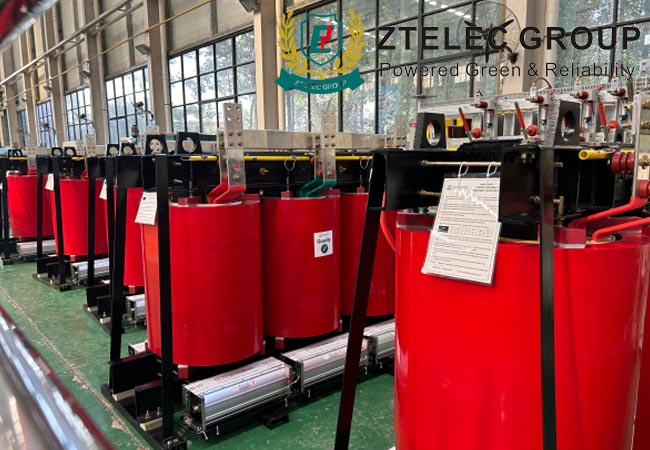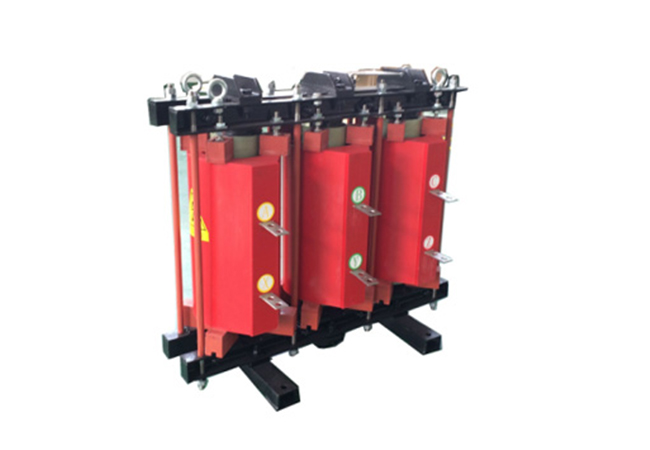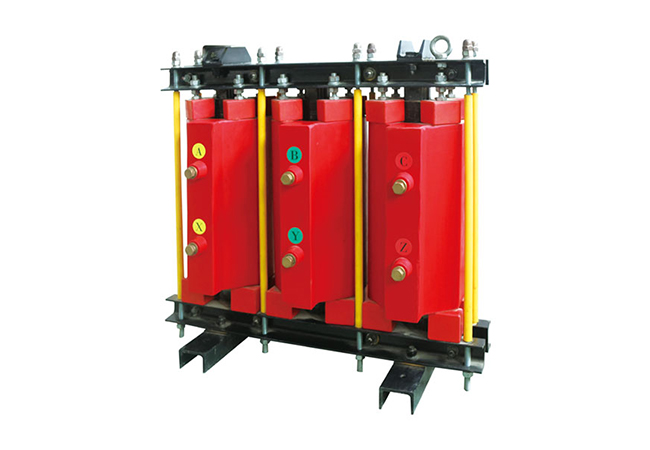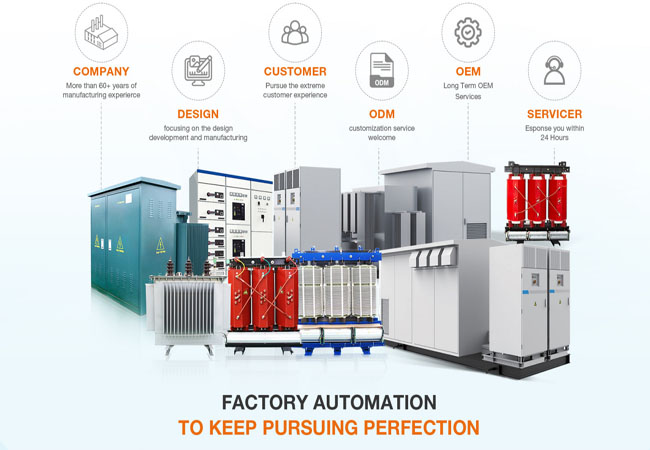The Difference Between Distribution Transformers And Power Transformers
09-07 2024 | By:
We all know that distribution transformers refer to transformers used in power systems of 20kV and below. Transformers installed in distribution rooms, outdoor box transformers, and pole-mounted transformers, as long as the voltage level is 20kV and below (usually 20kV or 10kV on the high-voltage side), are all distribution transformers regardless of the installation location or installation method.
Click the link to get a quote
Power transformers are used to transfer electric energy between power grids of different voltage levels. For example, regional substations set up transformers between 500kV and 220kV to exchange electric energy between the two power grids. The capacity of such transformers is very large and they do not serve the task of supplying power to users. So what are the categories of distribution transformers? What is the difference between distribution transformers and power transformers? The following article will introduce it to you in detail. I hope that reading the article can give the majority of electrical personnel a deeper understanding of distribution transformers and power transformers
▶ 01 What is a distribution transformer?
◆ Distribution transformer, referred to as “distribution transformer”. Refers to a static electrical appliance that transforms AC voltage and current according to the law of electromagnetic induction in the power distribution system to transmit AC power.
◆ In some areas, power transformers with voltage levels below 35 kV (mostly 10 kV and below) are called “distribution transformers”, or “distribution transformers” for short. The place and place where the “distribution transformer” is installed is also the substation. Distribution transformer refers to a static electrical appliance used in the power distribution system to transform AC voltage and current according to the law of electromagnetic induction to transmit AC power.
◆ China’s transformer products can generally be divided into ultra-high voltage (750 kV and above), ultra-high voltage (500 kV) transformers, 220-110 kV transformers, and 35 kV and below transformers according to voltage levels. Distribution transformers usually refer to power transformers with voltage levels of 10-35 kV and capacities of 6300 KVA and below that operate in the distribution network and directly supply power to end users.
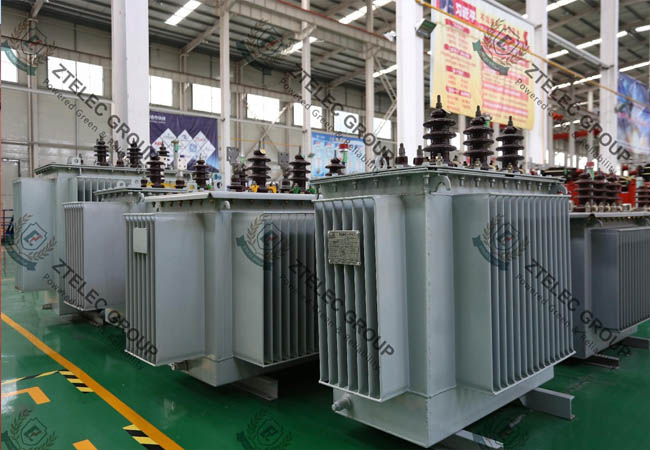
https://www.hnztelec.com/product/oil-immersed-tansformer
Click the link to get a quote
▶ 02 What is the difference between distribution transformers and power transformers?
◆ Distribution transformers are mainly used in distribution networks to provide electricity to various users. Generally, the high voltage is 66kV, and the low voltage is 380/220V, 3kV, 6kV, and 10kV. Power transformers are used to transfer electric energy between power grids of different voltage levels. For example, a transformer is set between 500kV and 220kV in a regional substation to exchange electric energy between the two power grids. The capacity of this transformer is very large and it does not serve the task of supplying electricity to users.
◆ The mainstream energy-saving distribution transformers are mainly energy-saving oil-immersed transformers and amorphous alloy transformers. Oil-immersed distribution transformers are divided into S9, S11, and S13 series according to loss performance. In comparison, the no-load loss of the S11 series transformer is 20% lower than that of the S9 series, and the no-load loss of the S13 series transformer is 25% lower than that of the S11 series.
◆ With the continuous deepening of China’s “energy saving and consumption reduction” policy, the country encourages the development of energy-saving, low-noise, and intelligent distribution transformer products. Some high-energy-consuming distribution transformers in operation on the grid no longer meet the development trend of the industry and are facing the need for technological upgrading and replacement. In the future, they will be gradually replaced by energy-saving, material-saving, environmentally friendly and low-noise transformers.
◆ State Grid Corporation has widely used S11 series distribution transformers and is gradually promoting S13 series in urban grid transformation. In the future, S11 and S13 series oil-immersed distribution transformers will completely replace the existing S9 series in operation on the grid. Amorphous alloy transformers are both energy-saving and economical. Their notable feature is that the no-load loss is very low, which is only about 20% of the S9 series oil-immersed transformers;
◆ It complies with national industrial policies and the requirements of energy conservation and consumption reduction of power grids. It is a distribution transformer with ideal energy-saving effect, especially suitable for places with low load rates such as rural power grids. Although the National Development and Reform Commission began to encourage and promote amorphous alloy transformers as early as 2005, China’s amorphous alloy transformers have not been mass-produced due to the insufficient production capacity of raw material amorphous alloy strips.
◆ The proportion of amorphous alloy transformers used in grid operation accounts for only 7%-8% of distribution transformers. Only Shanghai, Jiangsu, Zhejiang and other regions in China use amorphous alloy transformers in large quantities. The competition for distribution transformers is fierce. Faced with the pressure of high raw material costs, the lack of energy-saving evaluation system construction and market supervision and management, the high initial investment faced by the selection of energy-saving transformers makes the promotion of energy-saving transformers difficult.
◆ The 10kV high-voltage power grid adopts a three-phase three-wire neutral point ungrounded system operation mode. Most user transformers use the D/yn11 connection method of the neutral point direct grounding system operation mode, which can realize three-phase four-wire power supply. Folding capacity selection In the operation of distribution transformers, there are cases where the capacity is too large and the equipment is underloaded, and there are also cases where the equipment is overheated or even burned due to overload or overcurrent operation. The improper capacity selection of this device affects the reliability and economy of the power supply of the power system.
▶ 03 What are the categories of distribution transformers?
◆ The classification of commonly used transformers can be summarized as follows.
1. What are the categories of distribution transformers – by phase number
1) Single-phase transformer: used for single-phase loads and three-phase transformer groups.
2) Three-phase transformer: used for voltage increase and decrease in three-phase systems.
2. What are the categories of distribution transformers – by cooling method
1) Dry-type transformer: relies on air convection for cooling, generally used for small-capacity transformers such as local lighting and electronic circuits.
2) Oil-immersed transformer: relies on oil as a cooling medium, such as oil-immersed self-cooling, oil-immersed air cooling, oil-immersed water cooling, forced oil circulation, etc.
3. What are the categories of distribution transformers – by purpose
1) Power transformer: used for voltage increase and decrease in power transmission and distribution systems.
2) Instrument transformer: such as voltage transformer, current transformer, used for measuring instruments and relay protection devices.
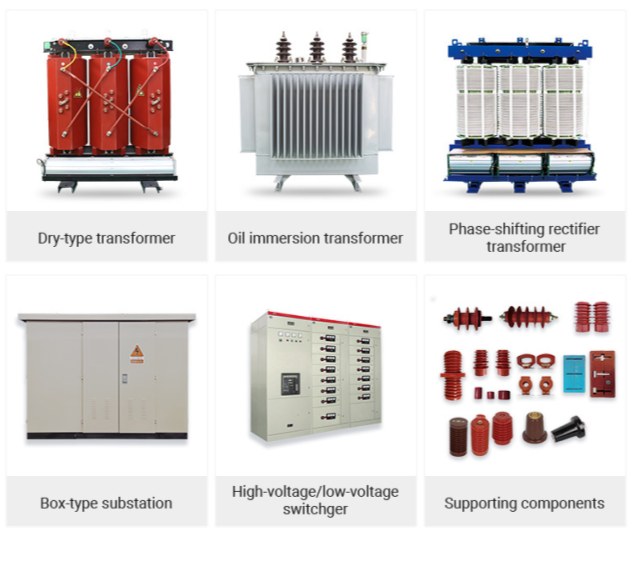
3) Test transformer: can generate high voltage and perform high voltage tests on electrical equipment. 4) Special transformer: such as electric furnace transformer, rectifier transformer, adjustment transformer, etc.
4. What are the categories of distribution transformers – by winding form
1) Double-winding transformer: used to connect two voltage levels in the power system.
2) Three-winding transformer: generally used in regional substations of power systems, connecting three voltage levels.
3) Autotransformer: used to connect power systems of different voltages. It can also be used as an ordinary step-up or step-down transformer.
5. What are the categories of distribution transformers – by core form
1) Core transformer: used for high-voltage power transformers.
2) Shell transformer: used for special transformers with large currents, such as furnace transformers, welding transformers; or power transformers for electronic instruments, televisions, radios, etc.
ZTELECGROUP takes distribution transformers as its core products: oil-immersed transformers (≤35kV), dry-type transformers (≤35kV), mining transformers and other special transformers. Welcome to call us for consultation. Contact number: 0086-157 1674 9170.
You may also find these interesting:
